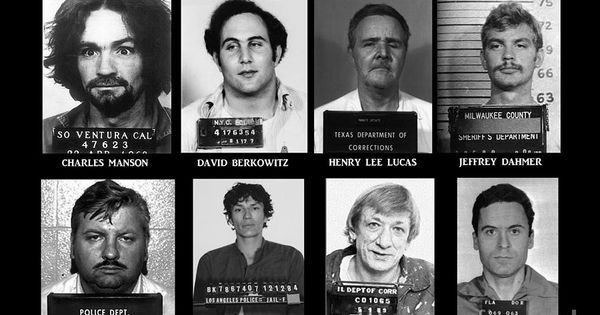Examples Of Mission Oriented Serial Killers - lasopawei. Feb 06, 2011 Missionary serial killers believe it is their duty to kill what they believe is an unwanted element. For example, they believe homosexuals, prostitutes, and people of different religions and ethnicities deserve to be killed to rid society of an unwanted element. A second type of serial killer is mission oriented. These serial killers are motivated to eliminate certain types of people. They do not hear voices or see visions commanding them to kill. Rather, they view their victims as “undesirable,” and killing them is fulfilling a. The mission-oriented killers are usually in their best of mind contrary to common believes that they are usually insane. Their primary driver to undertake their serial killing activities is the strong belief in their faith.
coldbloodedkiller:


4 Types Of Serial Killers


What Is A Mission Oriented Serial Killer
Motives of serial killers:
- Visionary - Visionary serial killers suffer from psychotic breaks with reality, sometimes believing they are another person or are compelled to murder by entities such as the Devil or God.The two most common subgroups are “demon mandated” and “God mandated.” [Example: David Berkowitz ‘Son of Sam’]
- Mission-oriented - Mission-oriented killers typically justify their acts as “ridding the world” of a certain type of person they perceive as undesirable, such as homosexuals, prostitutes, or people of different ethnicity or religion; however, they are generally not psychotic. Some see themselves as attempting to change society, often to cure a societal ill [Example: Ted Kaczynski ‘Unabomber’]
- Hedonistic - This type of serial killer seeks thrills and derives pleasure from killing, seeing people as expendable means to this goal. Forensic psychologists have identified three subtypes of the hedonistic killer: “lust”, “thrill” and “comfort”. (1) Lust: Sex is the primary motive of lust killers, whether or not the victims are dead, and fantasy plays a large role in their killings. Their sexual gratification depends on the amount of torture and mutilation they perform on their victims. They usually use weapons that require close contact with the victims, such as knives or hands. As lust killers continue with their murders, the time between killings decreases or the required level of stimulation increases, sometimes both [Example: Kenneth Bianchi and Jeffrey Dahmer]; (2) Thrill: The primary motive of a thrill killer is to induce pain or create terror in their victims, which provides stimulation and excitement for the killer. They seek the adrenaline rush provided by hunting and killing victims. Thrill killers murder only for the kill; usually the attack is not prolonged, and there is no sexual aspect. Usually the victims are strangers, although the killer may have followed them for a period of time. Thrill killers can abstain from killing for long periods of time and become more successful at killing as they refine their murder methods. Many attempt to commit the perfect crime and believe they will not be caught [Example: Zodiac Killer]; (3) Comfort (profit): Material gain and a comfortable lifestyle are the primary motives of comfort killers. Usually, the victims are family members and close acquaintances. After a murder, a comfort killer will usually wait for a period of time before killing again to allow any suspicions by family or authorities to subside. They often use poison, most notably arsenic, to kill their victims. Female serial killers are often comfort killers, although not all comfort killers are female [Example: H.H. Holmes]
- Power/control - The main objective for this type of serial killer is to gain and exert power over their victim. Such killers are sometimes abused as children, leaving them with feelings of powerlessness and inadequacy as adults. Many power- or control-motivated killers sexually abuse their victims, but they differ from hedonistic killers in that rape is not motivated by lust but as simply another form of dominating the victim [Example: Ted Bundy]